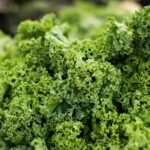 Jenny Hil
Jenny HilWhy Your Diet Matters More After 40
Let’s face it—aging is inevitable. But how we age is something we do have some control over, especially when it comes to how we eat. After the age of 40, our bodies start to change in several key ways: metabolism slows down, hormone levels shift, and muscle mass naturally begins to decline. Ever wonder why it’s harder to maintain energy or muscle after your 40th birthday? That’s why food becomes more than fuel—it’s a powerful tool for wellness and longevity.
So, what should you eat more of after 40? That’s exactly what we’re covering in this post. Just like your wardrobe changes with the seasons, your diet should adjust as you age to match your body’s evolving needs. Whether you’re looking to preserve bone health, protect your heart, or boost your energy, adding the right foods to your plate can make a big difference.

1. Protein-Rich Foods to Preserve Lean Muscle
Muscle mass naturally decreases with age, a condition known as sarcopenia. This starts as early as our 30s and gradually intensifies if we don’t take action. That’s where protein comes in.
Why is protein important after 40? Simply put, it helps maintain muscle mass, supports metabolism, and keeps you feeling full longer, which can assist with weight management—another concern as we age.
Best protein-packed choices:
- Eggs – Rich in high-quality protein and essential nutrients like choline.
- Salmon – Excellent source of protein and omega-3 fatty acids, great for heart and brain health.
- Greek Yogurt – High in protein, probiotics, and calcium.
- Lean poultry and grass-fed beef
- Plant-based proteins like lentils, chickpeas, and tofu
Quick Tip: Try spreading your protein intake evenly throughout the day to maximize synthesis and muscle preservation.

Photo courtesy of Pexels.com
2. Fiber-Filled Foods for Heart and Gut Health
After 40, cardiovascular and digestive health become even more vital. And if you aren’t already in love with fiber, now is the time.
How does fiber help? It can lower cholesterol, regulate blood sugar, and keep things moving smoothly in the digestive tract. Plus, it helps you stay full longer, which can reduce those late-night snack attacks.
Fiber-rich foods you should be eating:
- Oats – Help manage cholesterol and are super versatile.
- Chia seeds and flax seeds – Tiny but mighty. Great for smoothies or mixing into yogurt.
- Beans and legumes – Packed with fiber, protein, and a slew of essential micronutrients.
- Berries – High in fiber and antioxidants. Try blueberries, raspberries, or strawberries.
- Whole grains like quinoa and farro
Real-life example: I swapped my sugary breakfast cereal with overnight oats topped with berries and flaxseed—game changer for my energy and digestion!
3. Foods High in Calcium and Vitamin D
As we age, our bones tend to lose density. Women, in particular, are at a higher risk for osteoporosis after menopause due to declining estrogen levels. To keep bones strong, calcium and vitamin D are essential nutrition allies.
Top calcium and vitamin D sources:
- Dark leafy greens – Think kale, collards, and spinach.
- Dairy products like milk, cheese, and yogurt
- Fortified foods such as plant-based milks and cereals
- Sardines – Don’t knock them till you try them! They’re surprisingly tasty and very high in calcium.
- Sunshine and supplements for vitamin D
Pro Tip: Your body absorbs calcium better when combined with vitamin D, so pair smartly!

Photo courtesy of Pexels.com
4. Antioxidant-Rich Foods to Fight Aging
We can’t stop aging, but we can slow it down. Foods rich in antioxidants help reduce inflammation and protect against diseases like Alzheimer’s, heart disease, and cancer—all of which become more common with age.
Top antioxidant-packed choices:
- Avocados – Healthy fats, fiber, and antioxidants make these a triple threat against aging.
- Green tea – Full of anti-aging compounds called catechins.
- Tomatoes – Rich in lycopene, a powerful antioxidant that supports skin and heart health.
- Nuts – Almonds and walnuts especially are great for the skin and brain.
- Cruciferous veggies like broccoli, cauliflower, and Brussels sprouts
Final Thoughts
Getting older doesn’t mean slowing down. It means getting smarter about how you take care of yourself—starting with what goes on your plate. Whether you’re 40, 50, or beyond, adding more of these foods into your daily routine can support energy, muscle health, immunity, and longevity.
To recap, here’s what to eat more of after 40:
- Protein-rich foods to maintain muscle
- Fiber-filled foods for heart and digestion
- Calcium and vitamin D sources for bone strength
- Antioxidant-rich foods to fight inflammation and signs of aging
Remember, small changes add up over time. Start by tweaking one meal a day, and gradually build a lifestyle that supports your healthiest, happiest self.
Need inspiration? Consider looking up delicious recipes that combine these powerhouse ingredients. A salmon and quinoa bowl with leafy greens and avocado, topped with a sprinkle of chia seeds? Healthy and satisfying!
Want more tips on healthy eating after 40? Explore other resources from NIH, Healthline, and EatingWell to stay informed and inspired.
Here’s to thriving—not just surviving—after 40!













